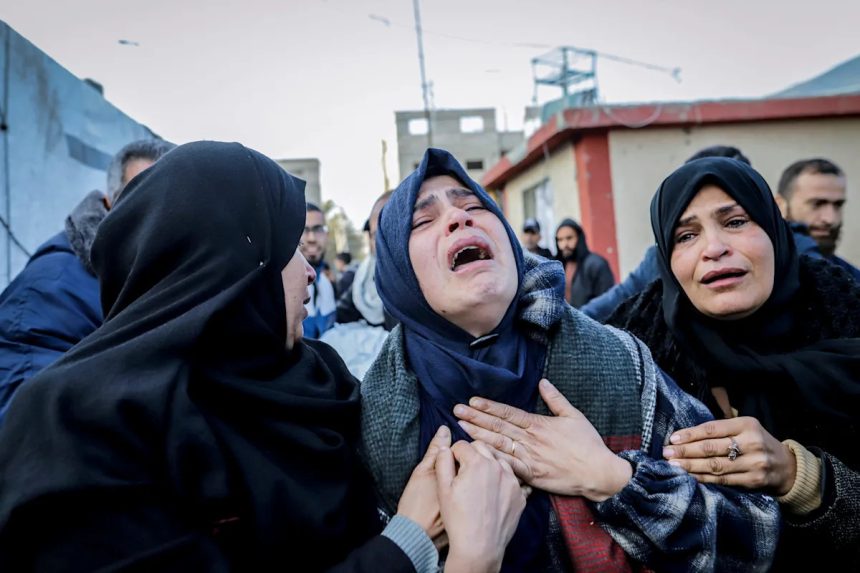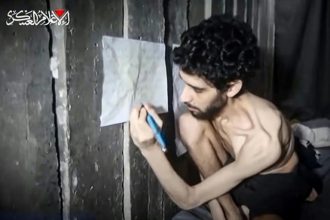Has the world’s most volatile region been transformed?
We may know the answer in short order.
President Trump’s 20-point plan for a ceasefire in Gaza and a reconstruction campaign to follow is an effort to capitalize on the sweeping changes and enormous devastation in the wake of Hamas’ Oct. 7 assault on Israel − now approaching its two-year anniversary.
A weakened Hamas on Oct. 3 agreed to the plan’s release of hostages, part of the initiative unveiled in the White House with Israeli Prime Minister Benjamin Netanyahu standing by the president’s side. Not in the response from the armed Palestinian group were other provisions detailing Gaza’s future, including some Hamas has long rejected.
But two years of tumult and change in the region may have opened new paths to peace, some analysts say.
The attacks that took 1,200 lives on Oct. 7 and the military response that has devastated Gaza have changed the region’s landscape. The repercussions have contributed to the ouster of a regime in Syria, a setback to the nuclear program in Iran, the isolation of Israel in the world and the testing of Trump’s hopes of winning the Nobel Peace Prize.
“I am actually much more hopeful today” than a decade ago, Michael Oren, a former Israeli ambassador to the United States, recently told USA TODAY’s “The Excerpt” podcast. Even after “two of the most difficult years in the history of Israel” and the Middle East, he sees possibilities amid shifting geopolitics in the region.
But even Netanyahu said as the plan was being unveiled that it was not yet clear whether the next moment would bring a ceasefire or an intensified war.
After Hamas’ response, Trump called on Israel to stop bombing Gaza, but he acknowledged in a video message, “We have to get the final word down in concrete.” History says that negotiating process ahead isn’t likely to be easy.
President Donald Trump and Israeli Prime Minister Benjamin Netanyahu hold a joint news conference at the White House in Washington, DC, on Sept. 29, 2025.
More: Hamas executed her son. Faith sustains her. Can a grieving mother help others heal?
Like the 9/11 terror attacks in the United States in 2001, the Oct. 7 assault in Israel in 2023, launched from the Palestinian enclave, left such a profound wound that it is known simply by its date.
Here are some of the things that have changed in the two years since then.
Gaza is decimated
In Gaza, the Hamas-run health ministry says more than 66,000 people have been killed − about half of them women and children − and humanitarian agencies now warn of famine.

A Palestinian child, displaced by the Israeli military offensive, takes shelter in a tent camp, amid an Israeli operation, in Gaza City, September 16, 2025.
Over the past two years, almost all of the estimated two million residents of Gaza have been forced to flee their homes, some several times, to avoid Israeli bombardment. In densely populated Gaza City, satellite photographs show entire blocks of buildings have been flattened.
A UN-backed panel concluded in August that one in three people in Gaza was going without food for days at a time.
Netanyahu denies a “policy of starvation” against Gaza and accuses Hamas of diverting humanitarian aid for its own purposes.
But after returning from a congressional fact-finding trip to the region, Maryland Sen. Chris Van Hollen accused the Netanyahu government of deliberately reducing cities to rubble and turning back humanitarian aid with the goal of forcing Palestinians to leave.
Israel is “implementing a plan to ethnically cleanse Gaza of Palestinians,” said Van Hollen, a member of the Foreign Relations Committee and a leading Democratic voice on the conflict, “and is using hunger as a weapon of war.”

This picture shows tents housing displaced Palestinians in Gaza City on September 1, 2025.
Israel is isolated
Even Netanyahu’s flight to New York for the annual meeting of the UN General Assembly in September underscored how the devastation in Gaza has eroded Israel’s standing in the world, and his own.
His plane took a circuitous route in an apparent effort to avoid flying over countries that might try to enforce the arrest warrant issued against him by the International Criminal Court last November for alleged war crimes.
In another sign of Israel’s new distance, even from traditional allies, France, Great Britain, Canada, Australia, Belgium and others announced they would recognize a Palestinian state − a step that Netanyahu says Israel would never accept. When he took the podium to speak, dozens of diplomats walked out in protest.
Netanyahu remained defiant.
At the UN, he told Hamas that “Israel will hunt you down” if the hostages weren’t released.
The region has been shaken
Other nations in the region have been affected by the tumult.
Israel says its air strikes against Hezbollah forces in Syria were one factor in the unexpected fall of the Assad regime there in December 2024.

Iranians rally in Tehran on June 24, 2025. Three days prior, America dropped bunker-busting bombs on three of Iran’s nuclear sites. President Donald Trump is trying to keep a fragile ceasefire between Israel and Iran in place as reports emerged indicating the U.S. attack on Iran’s nuclear facilities was not as successful as he initially claimed.
Meanwhile, spurred by Oct. 7, Israel launched long-threatened air strikes on Iran’s nuclear facilities in June. Trump followed up by ordering U.S. strikes using bunker-busting bombs designed to destroy facilities hidden deeply underground.
“After October 7th, we learned that we are not going to wait for our enemies to surprise us again,” Israel’s UN Ambassador Danny Danon told NPR at the time.
Some hostages are still captive
Most of the 251 hostages taken on Oct. 7, 2023, have been freed or their bodies have been returned under previous ceasefire deals. About 20 living hostages remain captive in desperate conditions, Israeli officials say, and about 25 more are believed to have died, but their bodies have not been returned to their families.

Rachel Goldberg-Polin and Jon Polin the U.S.-Israeli parents of Hersh Goldberg-Polin, who was taken hostage during the deadly October 7 attack by Hamas, look on as the final 120 letters are added to a new Torah scroll, dedicated to Hersh Goldberg-Polin and the other hostages seized during the deadly October 7 attack by Hamas, at a synagogue in Jerusalem on July 18, 2024.
Hostage families pressed for their release in a demonstration outside the UN during the General Assembly in New York in late September. Their red-and-yellow banner read: “48 hostages are waiting for leaders to make courageous decisions.”
Her heart was racing and she could not breathe, Macabit Mayer, the aunt of hostages Ziv and Gali Berman, told reporters at the protest. The twin brothers, who were reported in early 2025 to be alive, spent their 28th birthday in September in captivity.
“An entire nation wants to breathe again,” she said.
This article originally appeared on USA TODAY: Israel, Hamas, the world transformed, two years after Oct. 7 attacks









